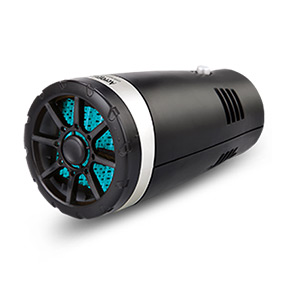clutch fluid hose
Understanding Clutch Fluid Hoses Importance, Functionality, and Maintenance
Clutch fluid hoses are crucial components in the hydraulic clutch systems of modern vehicles, playing a vital role in the performance and safety of the transmission system. While they may not be the most glamorous aspect of automotive engineering, neglecting the importance and maintenance of clutch fluid hoses can lead to serious performance issues. This article will delve into what clutch fluid hoses are, their functionality, signs of wear, and maintenance tips.
What Are Clutch Fluid Hoses?
Clutch fluid hoses are rubber or reinforced plastic tubes that transport hydraulic fluid from the master cylinder to the slave cylinder in a vehicle's clutch system. These hoses are designed to withstand high pressure and temperature fluctuations caused during the operation of the clutch. They typically feature a protective outer layer to shield against debris and other environmental factors.
The hydraulic clutch system operates on principles of fluid dynamics. When the driver presses the clutch pedal, the master cylinder generates hydraulic pressure that travels through the clutch fluid hose to the slave cylinder, which then disengages the clutch. This allows smooth shifting between gears, making the integration of clutch fluid hoses vital for seamless car operation.
Functionality of Clutch Fluid Hoses
The functionality of clutch fluid hoses hinges on their ability to transfer hydraulic fluid efficiently and effectively. Several factors contribute to their performance
1. Durability Clutch fluid hoses must withstand pressure and temperature variations. High-quality materials are essential for maintaining the structural integrity of these hoses under extreme conditions.
2. Flexibility Since they must be routed in various orientations throughout the engine compartment, flexibility is necessary. This ensures that the hoses do not kink or become damaged during vehicle operation.
3. Resistance to Fluid Degradation Hydraulic fluids can cause hoses to deteriorate over time. Effective clutch fluid hoses are resistant to wear from exposure to various types of fluids.
4. Sealing Proper sealing is crucial to prevent fluid leaks, which can compromise the entire clutch system.
Signs of Wear and Tear
Recognizing signs of wear and tear in clutch fluid hoses is vital for maintaining optimal vehicle performance. Some common indicators include
clutch fluid hose

- Fluid Leaks Any puddle or spotting of hydraulic fluid beneath the vehicle might signify a hose leak. Regular monitoring of the vehicle's parking spot can help identify leaks early.
- Cracking or Fraying Visual inspections can reveal cracks or frayed edges in the hoses. Check for any signs of wear during routine vehicle inspections.
- Soft or Swollen Areas If the hose feels soft or appears swollen, it may indicate degradation due to heat or chemical exposure.
- Loss of Pressure Difficulty in disengaging the clutch or a spongy clutch pedal can indicate issues with the fluid hoses, potentially requiring immediate attention.
Maintenance Tips
Maintaining clutch fluid hoses is essential for ensuring their longevity and optimal functioning. Here are some tips
1. Regular Inspections Periodic checks of the hoses can help identify problems early on. Inspect for any visual signs of wear or damage, especially during oil changes or routine servicing.
2. Fluid Changes Maintaining the quality of the hydraulic fluid is crucial. Old or contaminated fluid can degrade hoses faster, so regular fluid changes should be part of your maintenance schedule.
3. Proper Routing Ensure that clutch hoses are routed properly and secured to avoid chafing against other components, which can lead to premature wear.
4. Professional Replacement If any issues are detected, replace the hoses promptly. Although DIY repairs may seem tempting, improper installation can lead to further complications.
5. Climate Considerations In regions with extreme temperatures, consider using hoses designed to withstand these conditions. This can prevent premature failure due to environmental stresses.
Conclusion
Clutch fluid hoses play a fundamental role in the hydraulic clutch system of vehicles. Understanding their importance and functionality ensures that drivers can maintain their vehicles effectively. With regular inspections, proper maintenance, and timely replacements, the longevity and performance of clutch fluid hoses can be safeguarded, ultimately leading to seamless vehicle operation and enhanced driving experience. Ignoring these components could result in costly repairs and compromised safety, underscoring the need for consistent attention to this often-overlooked aspect of automotive maintenance.
-
Workings of Clutch Pipe and Hose SystemsNewsJun.04,2025
-
The Inner Workings of Hand Brake Cable SystemsNewsJun.04,2025
-
The Secrets of Throttle and Accelerator CablesNewsJun.04,2025
-
The Hidden Lifeline of Your Transmission Gear Shift CablesNewsJun.04,2025
-
Demystifying Gear Cables and Shift LinkagesNewsJun.04,2025
-
Decoding Clutch Line Systems A Comprehensive GuideNewsJun.04,2025
